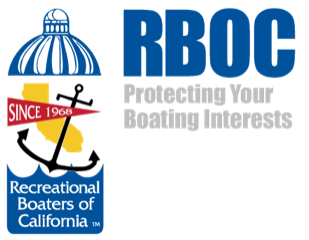RBOC is cautious but encouraged that the Santa Ana Regional Water Quality Control Board has taken an initial step to respond to concerns being expressed by individual boaters and clubs, SCYA, RBOC, BoatUS, the boating industry and the City of Newport Beach by cancelling the Public Hearing for the consideration of the adoption of proposed Basin Plan amendments to incorporate Total Maximum Daily Loads [TMDLs] for Copper and Non-TMDL Action Plans for Zinc, Mercury, Arsenic, and Chromium in Newport Bay.
The TMDL amendment to the Basin Plan aims at reducing copper in Newport Bay with recreational vessels identified as the major contributor.
Stated RBOC President John Marshall of Newport Beach: “RBOC is cautious but encouraged that the regional board is responding to the numerous concerns by delaying this key decision to allow for further engagement with the boating community and other stakeholders. Hopefully, those discussions will take place this time, as similar statements and promises were made 21 months ago. We urge individual boaters and clubs to continue and increase their engagement by attending and participating in any workshops that are held.”
The water board announcement of the meeting cancellation states that: “The public hearing has been cancelled to allow time for staff to further engage with stakeholders and the public regarding the proposed Basin Plan amendments. A new date for the Public Hearing has not been set at this time. Further notification will be provided when the Public Hearing is rescheduled.”
RBOC filed formal comments in August urging the Santa Ana Regional Water Quality Control Board not to adopt basin plan amendments that would impose stringent new requirements impacting the use of copper-based anti-fouling paints by recreational boaters. In those comments:
RBOC reiterates the comments we submitted in 2016 and also endorses the August 22 comments that have been submitted by the City of Newport Beach, the points raised in those comments, and the City’s request. These include:
It has been 21 months since the October 28, 2016 workshop and there have been no workshops, no outreach to the boating community, no inclusion of named dischargers in the development of the latest draft TMDL.
To date, we do not believe that our concerns about the practical impacts of the proposed implementation plan to our community and Newport Bay have been acknowledged or appreciated. Our original comments and concerns still stand.
The copper TMDL unlawfully attempts to force local agencies to solve a conflict caused by the Regional Board's failure to convince the Legislature or its sister state agencies to ban copper anti-fouling paint [AFP].
The copper TMDL is unlawful because alternatives to copper AFP are not effective or available and may have significant adverse environmental impacts.
The phased implementation schedule is unreasonable and unsupported, and would force substantial early investments that may be unnecessary.
In addition, RBOC is significantly concerned that:
The revised amendments place an unfair and unreasonable responsibility on boats to continue to be responsible for lowering the levels of copper even after boat copper loads have been reduced to recommended levels, if the water column then shows that copper levels exceed 3.1 CTR.
The information included in the attachments establishes that there may in fact not be a copper impairment [either in the water or sediment], and that no implementation plan is necessary at this time.
The board has not acknowledged and learned from the challenges ongoing at Marina del Rey Harbor and Shelter Island.
The revised amendments do not reflect the fact that alternatives to copper-based AFP may cause greater environmental harm and may increase the entrance and spread of invasive species.
The copper TMDL imposes unfunded state mandates.
The substitute environmental document fails to comply with the California Environmental Quality Act and CEQA's implementing guidelines.
The revised amendments seem flawed, preempted, give substandard consideration to current conditions and technical analyses, and do not comply with CEQA.
RBOC joins in the request of the City of Newport Beach that the board:
Not adopt the amendments at this time.
Select an additional review period a meaningful discussion about additional testing and monitoring, education, best management practices, the implementation timeline for DPR's updated AFP regulations, and more, with the goal of coming back to the Regional Board with more robust data and implementation ideas.
Commit to participating thoroughly and in good faith in that discussion provided all of the parties do so collaboratively, as has been the collective spirit in the past.
